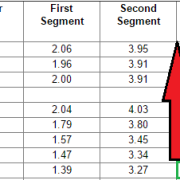Secure Act 2.0: Spending Today, Saving Tomorrow
It can be hard to save for your future retirement when current expenses loom large. We advise proceeding with caution before using retirement savings for any other purposes, but SECURE 2.0 does include several new provisions to help families strike a balance.
- Student Loan Payments Count as Elective Deferrals (2024): If you’re paying off student debt and trying to save for retirement, your student loan payments will qualify as elective deferrals in your company plan. This means, whether you contribute to your company retirement plan or you make student loan payments, your employer can use either to make matching contributions to your retirement account.
- Transferring 529 Plan Assets to a Roth IRA (2024): This one is subject to a number of qualifying hurdles, but SECURE 2.0 establishes a path for families to transfer up to $35,000 of untapped 529 college saving plan assets into the beneficiary’s Roth IRA. With proper planning, this may help families “seed” their children’s or grandchildren’s retirement savings with their unspent college savings.
- New Emergency Saving Accounts Linked to Employer Plans (2024): SECURE 2.0 has established a new employer-sponsored emergency savings account, which would be linked to your retirement plan account. Unless you are a “highly compensated employee” (as defined by the Act), you can use the account to save up to $2,500, with your contributions counting toward matching funds going into your main retirement plan account.
- Relaxed Emergency Plan Withdrawals (2024): SECURE 2.0 relaxes the ability to take a modest emergency withdrawal out of your retirement plan. Essentially, as long as you self-certify that you need the money, you can take up to $1,000 in a calendar year, without incurring the usual 10% penalty for early withdrawal. Once you’ve taken an emergency withdrawal, there are several hurdles before you’re eligible to take another one.
- Additional Exceptions to the 10% Retirement Plan Withdrawal Penalty (Varied): SECURE 2.0 has established new exceptions to the 10% penalty otherwise incurred if you tap various retirement accounts too soon. For example, there are several new types of public safety workers who can access their company retirement plans penalty-free after age 50. Various exceptions are also carved out if you’re terminally ill or a domestic abuse victim, or if you use the assets to pay for long-term care insurance. The Act also has modified how retirement plan assets are to be used for Qualified Disaster Recovery Distributions. Many of the new exceptions are fairly specific, so check the fine print before you proceed.
- Relaxed Emergency Loans from Retirement Plans (2023): If you end up living in a Federally declared disaster area, SECURE 2.0 also increases your ability to borrow up to 100% of your vested plan balance up to $100,000, with a more generous pay-back window.
- Expanded Eligibility for ABLE Accounts (2026): ABLE accounts help disabled individuals save for disability expenses, while still collecting disability benefits. Before, you had to be disabled before age 26 to establish an ABLE account. That age cap increases to 46.
- A Tax Break for Disabled First Responders (2027): If you are a first responder collecting on a service-connected disability, at least a portion of your disability payments will remain tax-free, even once you reach full retirement age and begin taking a retirement pension.
Next Steps
If you missed the first part of the blog series, we discussed key provisions in the newly enacted SECURE 2.0 Act of 2022, including updates that impact (1) savers/investors and (2) employers/plan sponsors. Check in next week for the last part of this blog series, where we share tax planning tips under this new Act.

Justin D. Rucci, CFP®
Wealth Advisor, Warren Street Wealth Advisors
Investment Advisor Representative, Warren Street Wealth Advisors, LLC., a Registered Investment Advisor
The information presented here represents opinions and is not meant as personal or actionable advice to any individual, corporation, or other entity. Any investments discussed carry unique risks and should be carefully considered and reviewed by you and your financial professional. Nothing in this document is a solicitation to buy or sell any securities, or an attempt to furnish personal investment advice. Warren Street Wealth Advisors may own securities referenced in this document. Due to the static nature of content, securities held may change over time and current trades may be contrary to outdated publications. Form ADV available upon request 714-876-6200.
Reference Materials and Additional Reading:
- Congress.gov, H.R.2617 – Consolidated Appropriations Act, 2023 (containing Division T – Secure 2.0 Act of 2022), December 29, 2022.
- The Street, “How Will SECURE 2.0 Affect You?” Echo Huang, December 29, 2022






